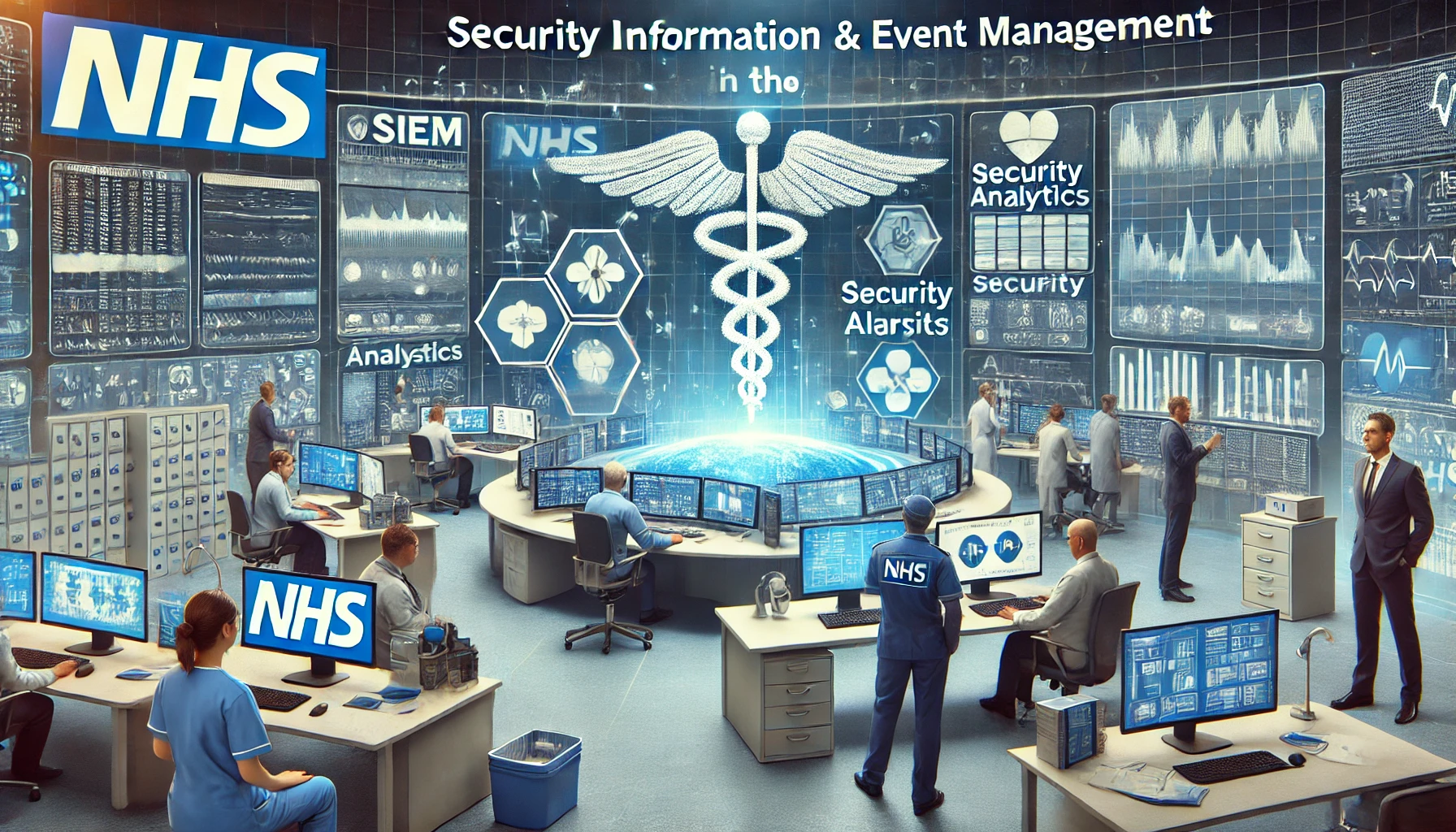NHS Cyber Assessment Framework (CAF) and SIEM Services
Enhancing NHS Cyber Resilience with the Cyber Assessment Framework (CAF)
The Cyber Assessment Framework (CAF), developed by the National Cyber Security Centre (NCSC), offers a structured and outcome-focused approach to evaluating and enhancing cyber resilience. Designed with critical sectors like healthcare in mind, the CAF consists of four key objectives and fourteen principles, guiding NHS organisations to effectively manage security risks, protect against cyber threats, detect security events, and minimise the impact of cyber incidents.
The framework enables organisations to perform both self-assessments and independent evaluations, providing a comprehensive view of how well cyber risks are managed. Each principle within the CAF is linked to specific outcomes, supported by Indicators of Good Practice (IGPs) to help assess the maturity of an organisation’s cybersecurity posture.
The Transition to CAF in NHS Cybersecurity
In September 2024, NHS England announced the integration of the Data Security and Protection Toolkit (DSPT) with the CAF, marking a pivotal shift in how cybersecurity is assessed within healthcare. This evolution ensures that NHS trusts, Integrated Care Systems (ICSs), and other healthcare providers adopt a modern, comprehensive approach to safeguarding patient data and critical systems.
The CAF supports organisations in:
- Setting clear cybersecurity objectives tailored to their operational environment.
- Measuring progress against these objectives through regular assessments.
- Identifying gaps in cybersecurity practices and implementing targeted improvements.
- Demonstrating compliance with regulatory standards, including GDPR and the NIS Regulations.
The Role of SIEM in NHS Cybersecurity
Security Information and Event Management (SIEM) systems are essential tools for NHS organisations, enabling real-time monitoring, threat detection, and incident response. A well-implemented SIEM solution not only strengthens an organisation’s security posture but also supports CAF compliance by providing evidence of effective monitoring and response capabilities.
Key benefits of SIEM for the NHS include:
- Real-Time Threat Detection: SIEM systems analyse log data from across the IT environment, identifying suspicious activities that may indicate cyber threats.
- Efficient Incident Response: By correlating events from multiple sources, SIEM solutions help prioritise security incidents, enabling swift and effective responses.
- Regulatory Compliance: SIEM platforms facilitate compliance with frameworks like the DSPT and CAF by providing robust reporting and audit capabilities.
Apto Solutions’ SIEM Risk & Threat Discovery Service
To support NHS organisations in navigating the complexities of cybersecurity, Apto Solutions offers a comprehensive SIEM Risk & Threat Discovery Service. This service helps healthcare providers identify vulnerabilities, assess current security measures, and align their cybersecurity practices with the CAF.
Key features of the service include:
- Comprehensive Risk Assessment: Identifying potential threats and vulnerabilities across the organisation’s IT infrastructure.
- SIEM Optimisation: Evaluating existing SIEM implementations to ensure they provide effective coverage and align with CAF requirements.
- Actionable Insights: Delivering detailed reports with recommendations for enhancing security posture and achieving CAF compliance.
- Expert Guidance: Providing strategic advice to help organisations implement best practices in cybersecurity management.
Integrating CAF and SIEM for a Resilient NHS
By combining the structured approach of the CAF with the advanced capabilities of SIEM systems, NHS organisations can build a robust cybersecurity framework. This integration ensures not only compliance with national standards but also the resilience needed to protect sensitive healthcare data and maintain critical services in the face of evolving cyber threats.
Partnering with Apto Solutions enables NHS trusts to:
- Align cybersecurity strategies with CAF objectives.
- Enhance detection and response capabilities through optimised SIEM solutions.
- Strengthen overall resilience against cyber incidents, safeguarding patient data and public trust.
In the dynamic landscape of healthcare cybersecurity, adopting a proactive, integrated approach is key to ensuring the security and integrity of NHS digital assets.

